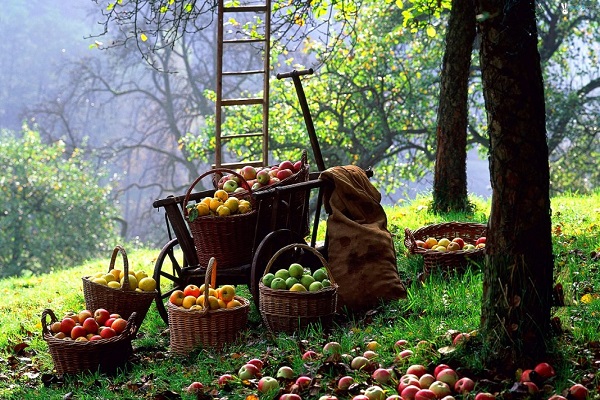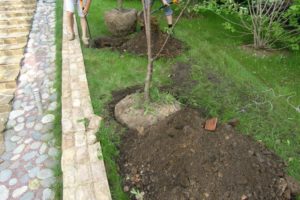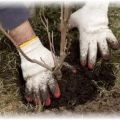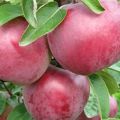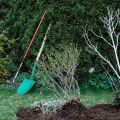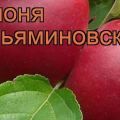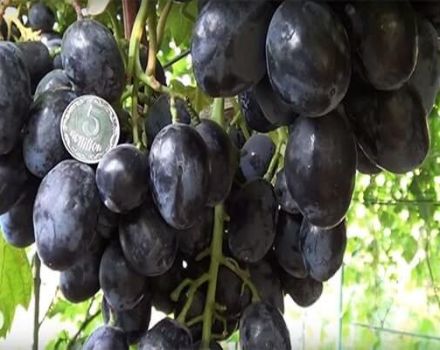Description and characteristics of the Melba apple tree, tree height and ripening time, care
Apples are the most favorite and common fruit grown by gardeners. In the huge variety of apple varieties, Melba is distinguished especially. The Melba apple tree presents such juicy, aromatic, sweet apples, the taste of which you will not confuse with any others. And for many of our compatriots, he became the taste of their childhood.
The world learned about Melba apples thanks to breeders from Canada, who bred it at the turn of the 19th and 20th centuries and gave the new variety the name of the famous opera diva from Australia, Nelly Melba. Very soon they were already planted by Europeans, and a little later - and Melba was recognized in Russia.
For several decades it has remained incredibly popular, and even gave birth to many apple hybrids.
Description and characteristics of the variety
Large yields and excellent taste are the very characteristic features that distinguish apples of this extraordinary variety. For those who grow them, it is very important to know that Melba is afraid of frost. This means that winter temperatures should not drop to too low values, below -30 ℃. Such extreme conditions will require additional protective measures from the gardener.

Height
This apple variety is classified as medium-sized. The tree does not grow higher than three meters, less often than four. On a dwarf rootstock - up to 2.
With good care, the Melba apple tree will survive:
- up to 55 years old - on seed stock;
- 20 - semi-dwarf;
- up to 15 - dwarf.

Crown width
In an adult tree, it is spreading, round, slightly elongated upward, reaches 7 meters in diameter, strongly leafy. This applies to Melba on seed stock. The semi-dwarf has a crown up to 2 meters wide, and in dwarf species - up to 1.5 meters.
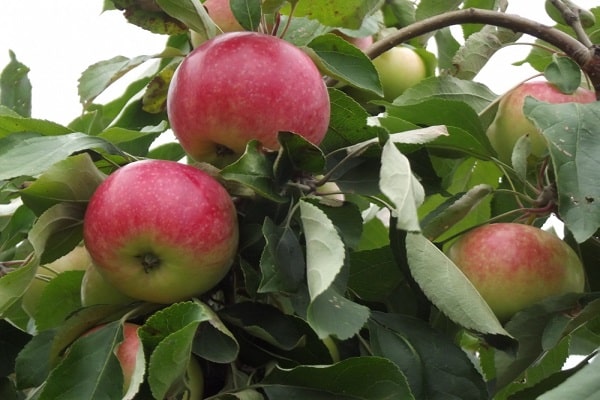
Tasting assessment
Usually, the average size of the Melba fruit is 120-150 grams, but you can also find larger ones. They have a dense, but not coarse skin, smooth and tender. Its red stripes and sweet and sour taste are easy to recognize.
The average mark is 4.4 (on a five-point scale).

Self-fertility
Apple Melba is a self-fertile variety, but it is better if pollinating apple trees grow nearby.

Winter hardiness
Melba shows average winter hardiness, and even at -30 ℃ it is able to bring good yields, although additional protective measures will need to be taken, as this threatens freezing of flower buds and shoots.
As a way out, container landing is often used when there is a suitable room for storage in winter conditions. In winter, you can also cover with nonwovens folded in several layers.
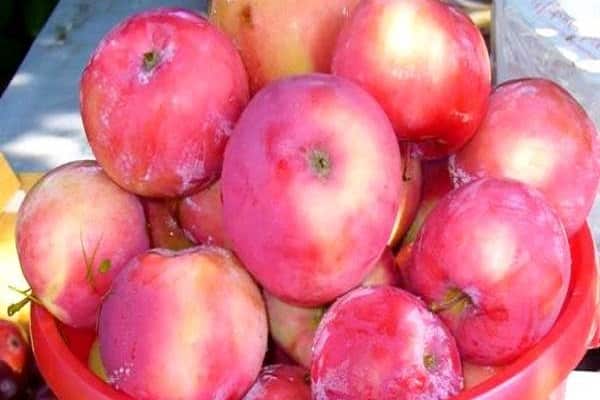
Only the Melba apple variety grows and bears fruit much more successfully in the regions located to the south.
Pollinator varieties
The greatest effect is achieved when apple varieties act as pollinators:
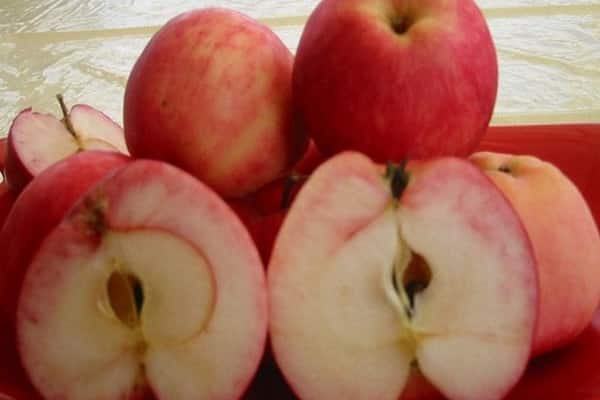
- Antonovka;
- Borovinka;
- Bellefleur-Chinese;
- Quinty;
- Suislepskoe;
- Stark erlist.
The beginning of fruiting
As for the ripening period, the apple tree regularly bears fruit, on average, from the 4th year, and after:

- 4-6 years old - on seed stock;
- 3-4 years - on a semi-dwarf;
- in the 3rd year - dwarf species.
Melba blooms in early spring. And at the end of summer, from the second half of August and then another month and a half, you can remove the fruits. The yield of this apple variety is high. First, the harvest is harvested annually, from the 8th year - even plentifully, but after 12 years, there is an alternation: the apple tree bears fruit for a year, and without apples.
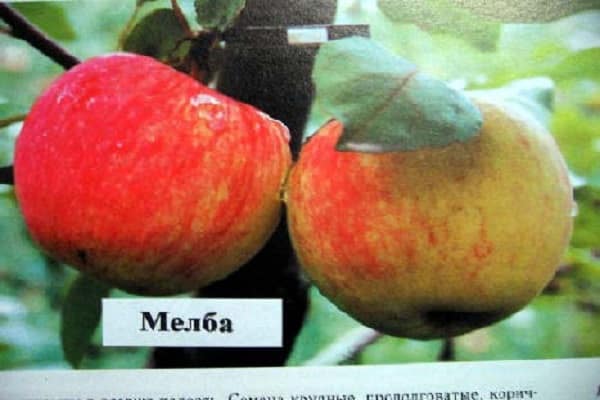
Sapling cost
Prices (in rubles) for seedlings in different regions of Russia differ:
| Sapling age, years | |||
| 3 | 4 | 5 | |
| Moscow and St. Petersburg | 1000 | 2500 | 6000 |
| Vologda | 320 | 650 | … |
| Temryuk Krasnodar Territory | 220 | 450 | … |
| Yekaterinburg | 300 | 600 | … |
Advantages and disadvantages
Jablone Melba is highly popular thanks to its merits. So, the variety is characterized by:
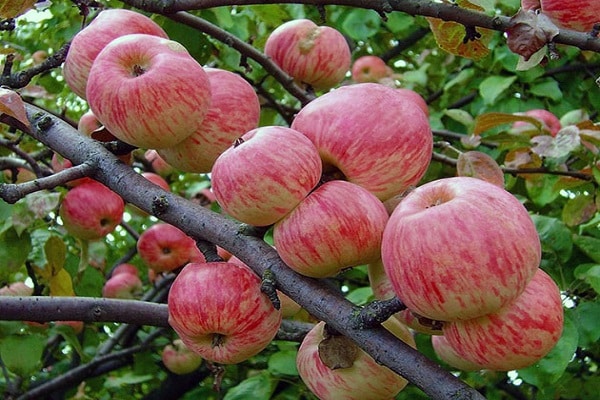
- the first harvest - in just 4 years;
- apples are strong and durable, which means they are transportable;
- well kept;
- high productivity;
- ample opportunities for processing.
However, this variety is not ideal. There are quite significant disadvantages:
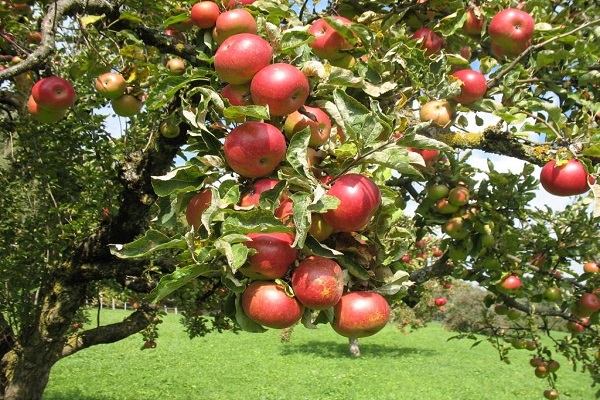
- lack of scab resistance;
- weak resistance to frost.
Gardeners have been successfully fighting with them for a long time. So it is enough to properly care for the apple tree, and it will delight with high yields for many years.
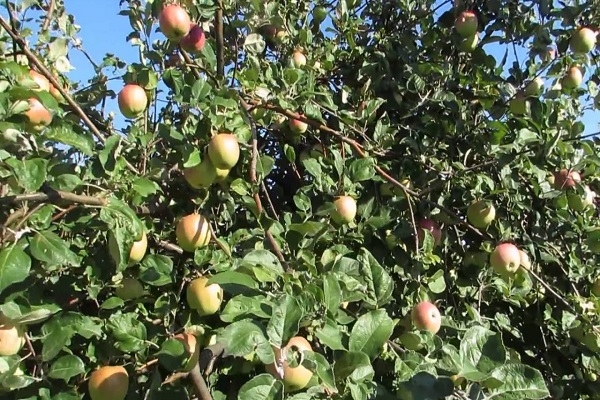
Landing features
Melba is referred to as centenarians. It is not uncommon for her to live 70-80 years.
According to legend, the Melba apple tree, which was planted back in 1647, still bears fruit in Manhattan.
In order for a tree to live and give its apples for many, many years, you need to know when, where and how to plant it and, of course, how to care for it.
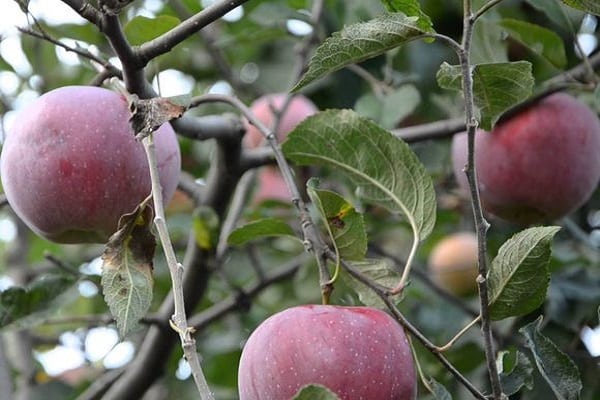
Dates and place
Experienced gardeners call early spring the best time for planting, when the buds have not yet begun to bloom, or the period from mid-September to early October, when the tree will shed its foliage.
In both cases, being late can backfire. Autumn planting is preferable. When a seedling is dug up, its roots are inevitably damaged, and during the winter they have time to recover. So in the spring, the tree is already capable of providing itself with nutrients in full. It is important to remember that from planting to the first autumn frost should not be less than a month.
But if your winters are cold and the temperature is below -20 °, it is better to plant an apple tree of this variety in spring.

When choosing a place where to plant a seedling, pay attention: no groundwater close to the surface. The risk is too high that in the spring the roots will be washed away, as a result the tree will soon die. Gardeners often deliberately dig channels to drain excess moisture.
But it is better to plant apple trees on a natural hill, in a place closed from gusts of wind.
Loam is the best soil for Melba. Clay or boggy - not the best choice. When the acidity level does not reach the norm, the soil should be fertilized by adding dolomite flour or slaked lime (500 grams per 1 square meter).
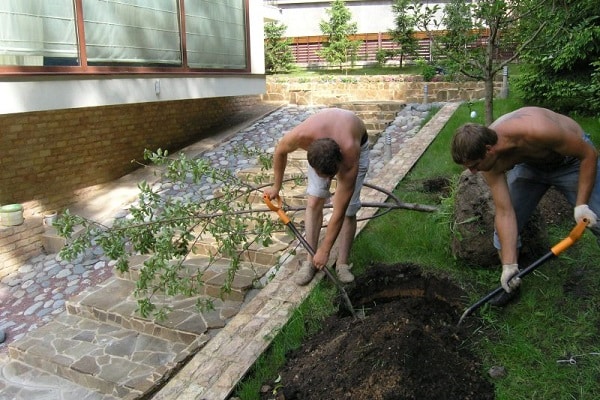
Sapling selection
Only strong and healthy trees are selected for planting, corresponding to the following parameters:
- age - 1-2 years;
- from half a meter to 80 centimeters in length;
- the presence of 2-3 lateral shoots,
- well-formed root system.
Two days before planting the seedling, the roots should be immersed in water, and immediately before planting, immersed in a clay chatterbox, having previously got rid of the leaves (cut them off).
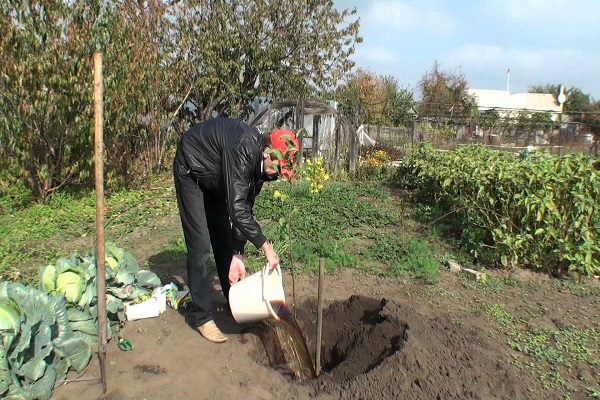
Preparing for landing
A pit should be prepared 2 weeks before planting:
- in depth - up to 80 centimeters;
- in width - up to 1 meter.
A 30-centimeter layer of sod is cut off. The same amount of sand, peat, humus is taken, mixed with 1 kilogram of ash, plus 200 grams of potassium sulfate, 400 grams double superphosphate.
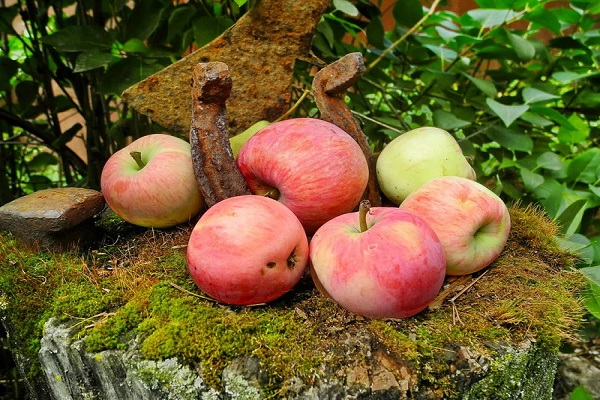
At the bottom of the formed pit, a drainage of 20 centimeters thick should be laid. His role will be performed by any of the following materials:
- broken brick;
- coarse river sand;
- fine gravel;
- nut shell.
If the groundwater level rises, this layer will protect the tree's root system from decay.
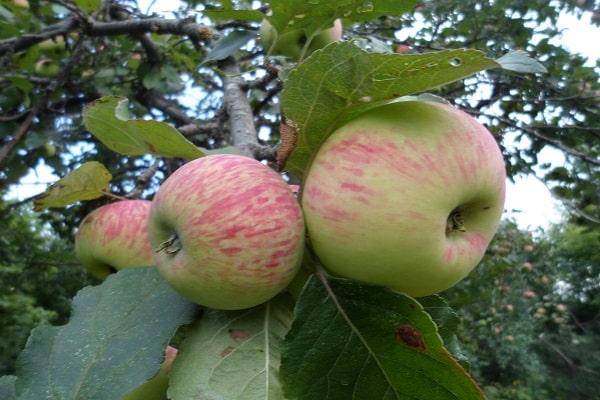
Planting a seedling
The soil mixture, which was prepared in advance, must be poured into a hole and form a slide, 20 centimeters in height is quite enough. On its northern side, a wooden peg must be driven in, so that it rises 70 centimeters above the ground. He will serve as a support.
The Melba sapling is installed directly on a dais, and the roots are carefully straightened, after which they can be covered with earth. It is recommended to shake the tree a little, since there should not be any voids between the roots.
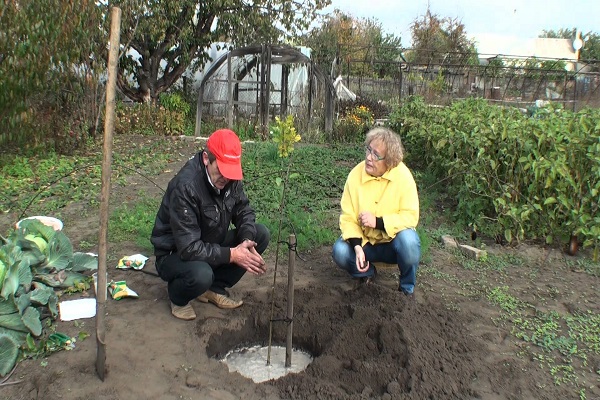
Now you can trample the soil, and around the seedling itself, with a radius of half a meter, they form a roller of earth 10-15 centimeters high.
It remains to tie the tree to a peg, pour 2 buckets of water and cover the trampled soil with a layer of needles, dry grass or peat.
Plant care rules
Taking care of Melba means performing a standard set of actions, in which not only watering with feeding and pruning. It includes preparation for winter, as well as prevention and control of diseases and pests.
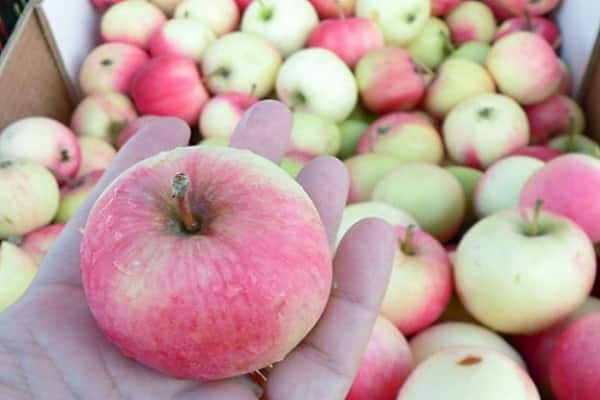
Watering
From spring, when buds appear on the tree, until the first month of autumn water the apple tree it is necessary once a month. If the tree is not yet bearing fruit, 2 buckets of water at a time are enough. With the appearance of the fruits, 4 buckets are required.
Previously, the tree is surrounded by a roller with a radius of half a meter in order to pour water into the formed circle. After that, the soil is leveled and covered with mulch.

Top dressing
If the land in which Melba saplings are planted is fertile, then you do not have to feed them immediately.
But next year this procedure cannot be avoided. At the beginning of May, a urea solution is first introduced into the soil (for 10 liters of water, a pound of funds); the procedure will have to be repeated again in the first summer days.
By the end of July, it's time to add dissolved chicken droppings (for 12 liters of water - 1 part of droppings). It can be a solution of cow dung (1 part per 8 liters of water).

When you dig the ground at the beginning of autumn, you should simultaneously add:
- potassium sulfate (50 grams);
- superphosphate (100 grams);
- wood ash (0.7 kilograms);
- humus compost or peat.
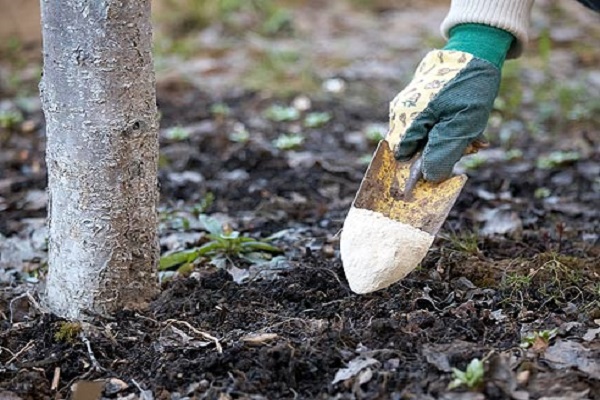
Pruning
The next year after planting, pruning of the young Melba apple tree should be performed. And it is recommended to do this before the kidneys hatch.
Over the next 3 years, a crown is formed at the tree. In this case, a third is cut off from the central branch. As for the shoots on the main branches, they should have 3 buds intact, and on all the others, only one remains. Those that grow crookedly or touch each other are removed.
In the future, sanitary pruning of damaged, improperly growing, dry branches should be performed.
It's important to know! Places of cuts must be treated with garden varnish.
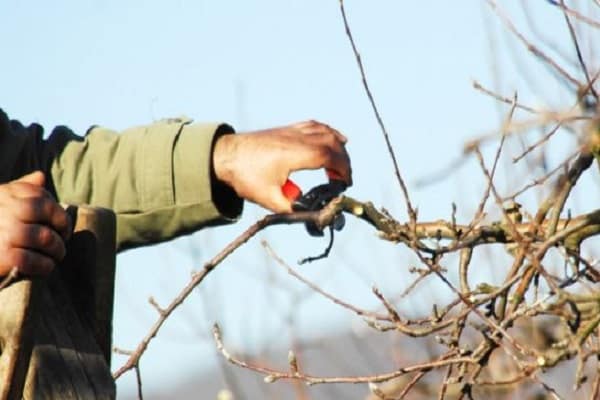
Preparing for winter
The Melba variety is unpretentious, if not for one of its features. You should always remember that these apple trees do not tolerate severe cold and frost.Therefore, preparing them for winter must be carried out especially carefully. Various measures are being taken:
- The trunk and lower branches are whitened.
- Additionally, they are insulated by wrapping the trunk with 3-4 layers of burlap or tarpaulin, and laying straw between the layers. The structure should be strengthened more reliably.
- Cover the apple tree with a snowdrift.
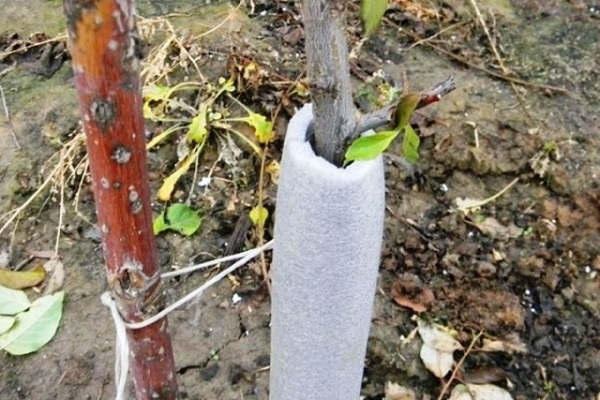
Diseases and pests
Let's talk about what poses a threat to these fruit trees.
Diseases of Melba and how to deal with them
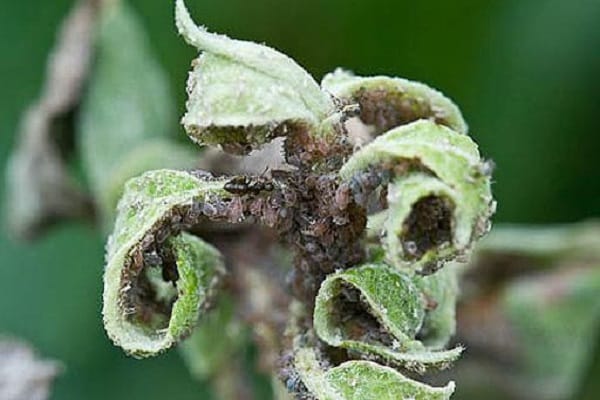
All plants are sick, the Melba apple tree is no exception.
- Scab.
Gardeners call the lack of resistance to this infection the main disadvantage of this variety. It all starts with the appearance of brown spots on the leaves, and ends with cracks in the fruits and spots of dark gray color.
Control methods: in the spring, spray with a solution of Oxyhom or Horus, prepared in strict accordance with the instructions.
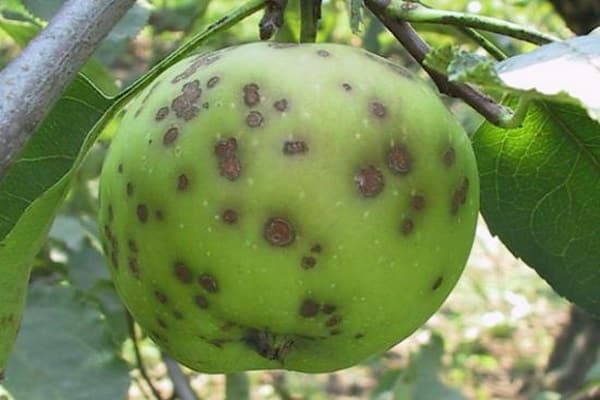
- Powdery mildew.
Due to the plaque that covers the tree, oxygen access to the leaves is closed. They also do not receive moisture, even the fruits cannot be set.
Control methods: Spray opening leaves with topaz, copper chloride - after flowering.
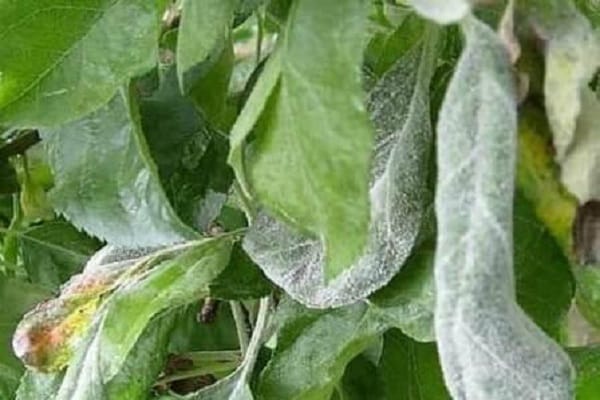
- Fruit rot.
It appears on apples with brown spots and whitish growths. Infected fruits should be destroyed immediately.
Control methods: spray three times:
- as soon as the leaves bloom - Soon;
- as soon as it blooms - by Horus;
- 3 weeks before harvest - Fundazol.
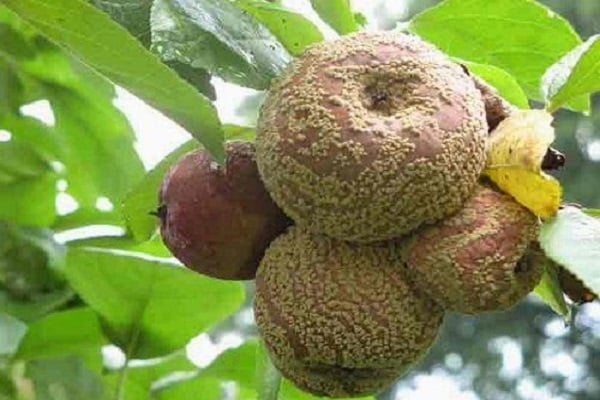
Apple tree pests and control
The names of the most common pests themselves speak volumes about their dangerous effects. And the most common are:
- Apple leaf roll.
A lot of trouble can be expected from this little butterfly. She lays eggs on young leaves, causing them to curl. Newly hatched caterpillars are capable of eating a leaf to the veins.
From one apple tree to another, they move too quickly. So all the surrounding trees will have to be processed, together with the sick one.
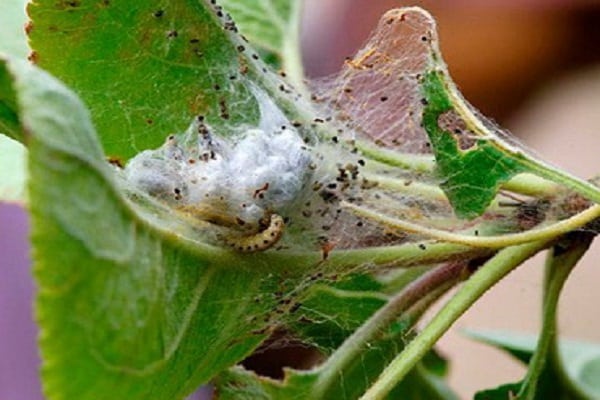
You can physically destroy the leaf rollers, for which:
- burn folded leaves;
- attract birds to the garden;
- create special traps.
There are folk recipes. Someone uses infusion of tobacco, someone is helped by a decoction of potatoes or tomato tops.
But if the damage is significant, only chemistry will help.
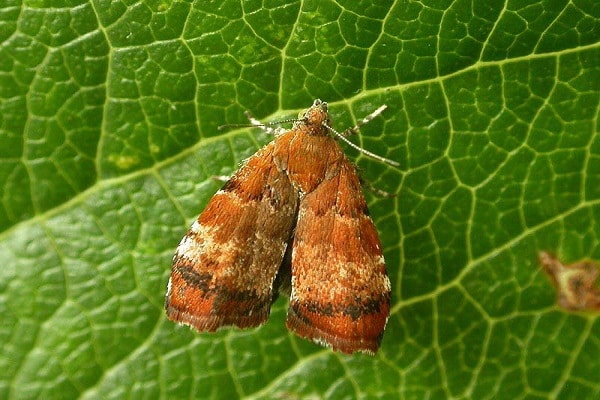
Their butterflies pick flower buds to lay their eggs. A caterpillar is born and breaks out, gnawing a seed, very quickly occupies an apple in the neighborhood.
You can use a sticky belt. Put on an apple tree, it will become a pest trap.
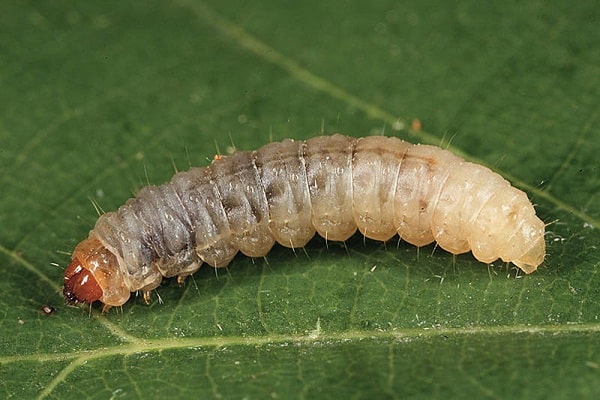
If you peel the bark (twice a year - in spring and autumn), you can get rid of the cocoons remaining in it.
You can resort to the "help" of insects, warring with the stalks, planting more flowering plants on the site to attract them. And it's very good if tomatoes grow nearby. The stalk does not like their smell.
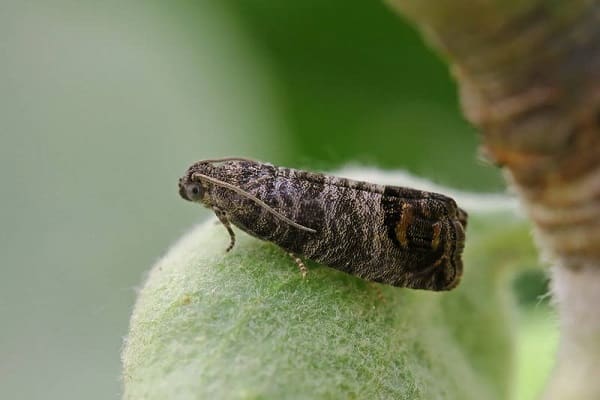
- Apple scale insect.
Apple juice serves as food for this pest. Once it is inhabited, small dark growths are observed on the bark. The insect is unusually tenacious, its eggs calmly survive in frost at 30 ℃, and a strong shell makes the scale insect not particularly sensitive to the effects of various chemicals. If you do not want the apple tree to stop growing, you will have to carry out chemical treatment of the apple tree with copper sulfate in the fall, and with Nitrafen in the spring.
You can make a solution of tar soap and ash and wash the trunk and branches of the apple tree with it.
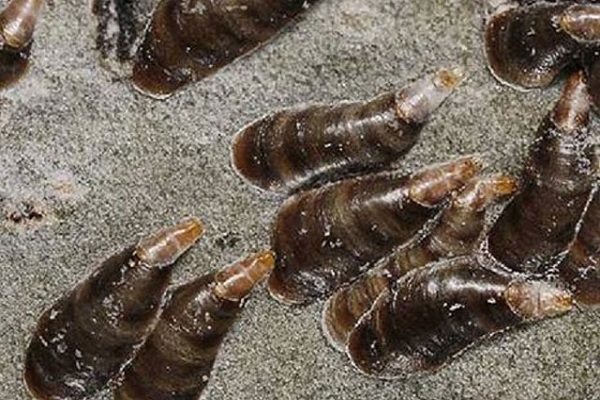
- Apple blossom beetle.
These bugs in the bud lay their larvae, thereby practically destroying it. Spraying with chlorophos solution helps well.
Sticky films are used to cleanse the bark. Works well whitewashing apple trees a solution of slaked lime (1.5-2 kilograms per 10 liters of water).
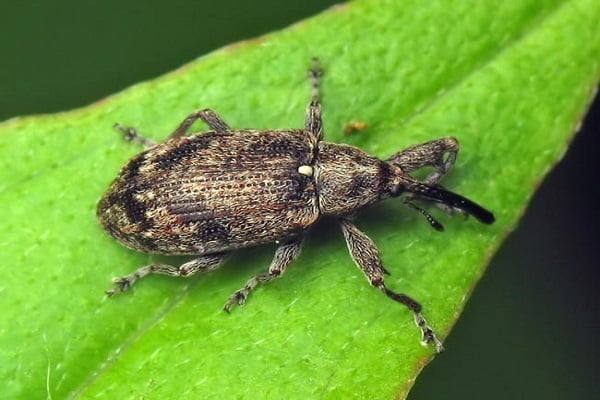
Harvesting and storage
The end of August is harvest time. It is not uncommon when the collection is delayed on September days. Moreover, it is recommended to do this in dry weather, if collected after rain, it will not be possible to save them.If a:
- pick fruits without waiting for full ripeness;
- do not allow apples to fall, damage to the skin when picking;
- put in a wooden container in 2-3 layers, wrapped in paper or shifting with wood shavings so that the fruits do not come into contact with each other;

then, having provided the storage temperature -1- +7 ° C, they can be stored without problems until early-mid-January.
The Melba apple tree is very well known for its incredible taste. There are many apple varieties that ripen at different times and differ from one another in taste characteristics. But true apple connoisseurs will not stop growing Melba.
